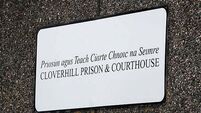Captain Rock: The Irish Agrarian Rebellion of 1821-1824
It’s the latest from a foremost authority on 19th century Ireland, Professor James S Donnelly, and while filed under history, it’s far from dry.
In fact, you can nearly smell the blood and burning flesh of one of Ireland’s many violent eruptions, in between the professor’s scholarly analysis and theorising.











